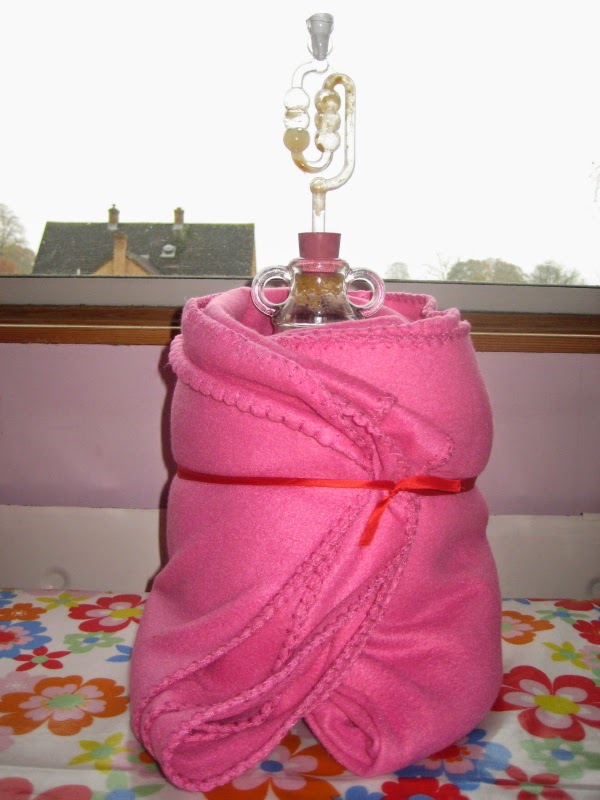This year I had a go at making cider. I had no idea what I was doing, so was prepared from the start for something strange to be the end result. I was not disappointed.
The first problem was that I didn't have a cider press, or any of the other equipment. I was shocked at how much presses cost - £70 seemed to be the minimum, and that was a tiny one. I thought I would ask my mate Pete if I could borrow his, but he'd thrown it away as it had gone rotten. I really couldn't get my head around making one from scratch, although it seemed quite a simple thing to do once you'd got all the right bits of wood and things.
So I decided to do it all by hand with cheesecloth, a big jam pan and a potato masher.
NEVER AGAIN. I thought I was going to give myself arthritis with the amount of strain and stress I subjected my hands to. It made a complete mess of my room as well, and apple pulp really does stick with a vengeance.
The other major problem was I learnt too late that the one type of apple you can't make cider from is russets. They don't have enough juice or sugar, and the cider never clears. By that stage I had a huge pan of russet apple pulp quietly fermenting by the radiator, so I was determined to carry on regardless.
I tried to squeeze juice out through the cheesecloth supported by a sieve over a pan, but it wasn't at all effective. Then the book on cider making arrived, and I opened a door to enlightenment to the sound of toning angels. I realized I had to add a lot of water to those russets in order to get any kind of cider for my efforts. I had already started to do this in a jar. It had started out as an attempt to make apple cider vinegar, so I'd left the top off it and covered it with muslin. I thought I would combine this with the pulp in the pan and a lot more water. This was before I'd read about keeping the juice away from air as much as possible if you want to make cider not cider vinegar. Luckily I think the pulp on the surface of the liquid had shielded it from the air anyway.
I transferred the whole lot into a demi john, fitted an air lock, and waited to see what I'd created. What was it to be - Ciderstein or Ciderella?
A month, and a couple of rackings, later I concluded I had created Ciderstein. It was very acidic, possibly well on the way to becoming vinegar. It was also very textured, even after I'd tried to filter it with a sieve and then cheesecloth. Apparantly filtering is rather sacrilegious if you are a proper cider maker, but I have no shame.
There was something about it though - almost medicinal, and rather soothing. I wondered if I had created more of an apple wine, and it might just need to rest a bit. I had added rather a lot of various forms of sugar to it in order to make up for the lack of inherent sugar in the russet apples. Rather like Mickey (or should that be Minnie) mouse in the Magician's apprentice, I'd got a bit carried away - I tried caster sugar, honey, demerara sugar, and almost tried raisins. The yeasts seemed to love it anyway, and the sound of the popping air lock became a comforting rhythm as the year slunk into winter.
I bottled it up after the second racking, and was a bit dejected. It definitely tasted sharp like vinegar, but I didn't have the heart to give up, and kept the lids on the bottles to keep the air out as if I was making an alcoholic beverage and not something to cook/clean with.
On Solstice I thought I would wassail my apple trees with it anyway, as it did have a kind of medicinal magical quality which would surely be a protective talisman. I found a little wooden egg cup and decanted some into a small bottle. I toasted my friends over the solstice fire, and was pleasantly surprised. It didn't taste like vinegar anymore. It was much softer, almost like wine, though still incongruously grainy in texture. I think it might be rather interesting after another month or so, when I may try filtering it again. The texture is part of its charm really though.
I wassailed the apple trees with a simple blessing, and felt very good, like I was rooting myself into a very old pulsing network that had been there all the time, just waiting to be noticed again.
I'll give myself plenty of time to make a cider press next year.















